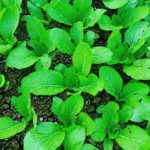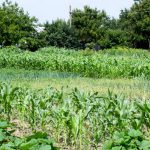Are you interested in cultivating your own vegetables but don’t have access to traditional soil? Vegetable gardening without soil, also known as hydroponic gardening, offers a solution to this challenge. This innovative method allows individuals to grow a variety of vegetables without the need for conventional soil, offering numerous benefits and opportunities for homegrown produce.
Hydroponics, the practice of growing plants in nutrient-rich water solutions instead of soil, has gained popularity among urban gardeners and agricultural enthusiasts. By eliminating the reliance on traditional soil, hydroponic gardening opens up possibilities for cultivating fresh vegetables in limited spaces, including apartments, rooftops, and indoor environments. This approach also minimizes the risk of soil-borne diseases and pests while providing greater control over plant nutrition and growth conditions.
One of the key advantages of vegetable gardening without soil is the ability to maximize space utilization while promoting efficient resource management. This sustainable method conserves water and nutrients by circulating them within the hydroponic system, reducing waste and creating an environmentally friendly alternative to conventional farming practices.
Additionally, hydroponic systems offer a controlled environment that can support year-round vegetable production regardless of external weather conditions. As we delve into this article, we will explore how to implement successful hydroponic gardening techniques at home.
Hydroponic Systems
Hydroponic gardening is an innovative method of growing vegetables without traditional soil. Instead, plants are grown in a nutrient-rich water solution, providing them with everything they need to thrive. This soilless technique offers numerous benefits, including efficient use of water, faster plant growth, and the ability to grow crops in non-arable areas. Additionally, hydroponic systems can be used year-round, making it possible to enjoy a continuous supply of fresh produce regardless of the season.
There are several types of hydroponic systems that gardeners can choose from, each with its own unique advantages. Some common hydroponic systems include deepwater culture (DWC), nutrient film technique (NFT), and ebb and flow (also known as flood and drain). Each system varies in complexity and required maintenance but ultimately allows for the successful growth of vegetables without soil.
When setting up a hydroponic garden, it is essential to have the right materials and equipment on hand. This may include containers for holding the nutrient solution, growing medium such as rockwool or perlite, a pH testing kit to monitor acidity levels, and appropriate lighting for indoor gardens. By investing in quality equipment and understanding the different hydroponic systems available, individuals can create a flourishing vegetable garden without soil in their own homes or outdoor spaces.
- Deepwater culture (DWC)
- Nutrient film technique (NFT)
- Ebb and flow
Choosing the Right Vegetables for Hydroponic Gardening
When it comes to vegetable gardening without soil, choosing the right plants is crucial for a successful harvest. Fortunately, there are many vegetables that thrive in a hydroponic system, making it an ideal method for growing a wide variety of produce. Some of the best vegetables for hydroponic gardening include leafy greens like lettuce, spinach, and kale. These plants have shallow root systems and therefore adapt well to the nutrient-rich water in a hydroponic setup.
Another popular choice for hydroponic gardening is tomatoes. In fact, tomatoes grown in a soil-free environment often result in higher yields and better-tasting fruit compared to traditional soil-grown plants. Peppers, cucumbers, and herbs such as basil and cilantro also do exceptionally well in hydroponic systems.
When selecting vegetables for your hydroponic garden, it’s important to consider factors such as space and lighting requirements. Leafy greens can be grown in smaller setups or even vertical gardens, making them perfect for beginners or those with limited space. Larger plants like tomatoes and cucumbers may require more room to grow and adequate support structures such as trellises.
In addition to plant selection, it’s essential to choose high-quality seeds or seedlings for your hydroponic garden. Look for varieties specifically bred for greenhouse or indoor cultivation, as these are more likely to thrive in a controlled environment without soil. By carefully choosing the right vegetables and ensuring their proper care within a hydroponic system, you can enjoy a bountiful harvest of fresh produce year-round.
Setting Up Your Hydroponic Garden
When it comes to vegetable gardening without soil, hydroponic systems are a popular and effective method for growing a wide variety of vegetables. These systems allow plants to grow in a nutrient-rich water solution, eliminating the need for traditional soil. One of the key benefits of hydroponic gardening is the ability to control the plant’s environment more precisely, leading to faster growth and higher yields.
To set up your hydroponic garden at home, you will need a few essential materials and equipment. Here are some crucial components to consider:
- Container: Choose a suitable container for your hydroponic system, such as a reservoir or trough.
- Growing Medium: Consider using materials like perlite, vermiculite, or coconut coir as a medium for supporting plant roots in the absence of soil.
- Nutrient Solution: Invest in a high-quality nutrient solution that contains all the essential elements needed for healthy plant growth.
- Water Pump: A submersible water pump will help circulate the nutrient solution throughout the system.
- Lighting: To ensure proper photosynthesis, provide adequate lighting for your vegetable plants using grow lights or natural sunlight.
Once you have gathered all the necessary materials, follow these steps to set up your hydroponic garden:
- Choose an appropriate location with access to electricity and water supply.
- Set up your container and fill it with the chosen growing medium.
- Install the water pump to circulate the nutrient solution.
- Place the vegetables carefully into their designated spots within the system.
- Ensure proper lighting according to each plant’s specific requirements.
With careful attention to detail and regular maintenance, you can create a thriving soil-free vegetable garden using a hydroponic system right in your own home.
Nutrient Solutions
Hydroponic gardening, also known as vegetable gardening without soil, relies on nutrient solutions to feed the plants. In a soil-free environment, it is essential to provide the necessary nutrients directly to the plant roots for healthy and robust growth. Understanding the role of nutrient solutions and how to properly administer them is fundamental to successful hydroponic gardening.
The Importance of Nutrient Solutions
Nutrient solutions are vital in hydroponic gardening as they replace the nutrients that plants would naturally obtain from soil. These solutions contain essential elements such as nitrogen, potassium, phosphorus, calcium, magnesium, and other micronutrients required for optimal plant growth. Without these nutrients readily available in the growing medium, plants rely solely on the solution provided by hydroponic gardeners.
Essential Nutrients for Soil-Free Growth
Each nutrient in the solution plays a crucial role in promoting healthy vegetable growth without soil. Nitrogen is responsible for leafy green growth, while phosphorus aids in root development and flowering. Potassium helps with disease resistance and overall plant vigor. Calcium and magnesium are essential for cell structure and photosynthesis. It’s important for hydroponic gardeners to understand how each nutrient contributes to plant health and adjust their nutrient solution accordingly.
Administering Nutrient Solutions
Proper administration of nutrient solutions involves understanding the specific needs of the vegetables being grown. Different stages of growth may require adjustments to nutrient levels and ratios. Additionally, monitoring pH levels is necessary as it affects nutrient availability to plants in a water-based system. Hydroponic gardeners must ensure that their plants receive consistent and balanced nutrition throughout their life cycle to thrive in a soil-free environment.
Common Challenges and How to Overcome Them
Vegetable gardening without soil, also known as hydroponic gardening, offers numerous benefits such as water efficiency, faster growth rates, and the ability to grow vegetables in non-traditional environments. However, like any method of gardening, hydroponics comes with its own set of challenges. Understanding these challenges and learning how to overcome them is crucial for the success of your soil-free vegetable garden.
One common challenge in hydroponic gardening is maintaining the proper nutrient balance in the water. Without a nutrient-rich soil to rely on, it’s essential to provide all the necessary nutrients directly to the plant roots through the water. This can be a delicate balance, as too much or too little of certain nutrients can have detrimental effects on plant health. Regular monitoring and adjustment of nutrient levels are key to overcoming this challenge.
Another potential issue in soil-free vegetable gardening is the risk of root rot due to improper watering and oxygen levels. In traditional soil-based gardens, the soil provides a buffer for excess moisture and allows for air circulation around the roots.
In a hydroponic system, it’s important to ensure that the roots are receiving enough oxygen while also preventing them from becoming waterlogged. Proper water circulation and aeration techniques can help prevent root rot and promote healthy plant growth in a soil-less environment.
Finally, maintaining an optimal pH level in the nutrient solution is crucial for healthy vegetable growth without soil. The pH level affects nutrient availability to the plants, so it’s important to regularly test and adjust the pH of your hydroponic system. Overcoming this challenge involves consistent monitoring and adjustment using pH testing kits and appropriate pH-adjusting solutions.
By understanding these common challenges and implementing effective strategies to overcome them, you can ensure a successful and bountiful harvest from your soil-free vegetable garden. Vegetable gardening without soil may present unique obstacles, but with proper knowledge and careful attention to detail, you can enjoy all the benefits that this innovative method has to offer.
Maintenance and Care for Soil-Free Vegetable Gardens
Maintaining a soil-free vegetable garden requires consistent care and attention to ensure the success of your hydroponic system. One of the key aspects of maintenance is monitoring the pH levels of the nutrient solution. The ideal pH range for most vegetables in a hydroponic system is between 5.8 and 6.3, so regular testing and adjustments are necessary to keep the balance just right.
In addition to pH levels, it’s crucial to monitor water quality in a soil-free vegetable garden. Since plants in a hydroponic system rely entirely on the nutrient solution for their essential minerals, ensuring that the water is free of contaminants or impurities is essential for their health and growth.
Another important aspect of maintaining a thriving soil-free vegetable garden is proper maintenance routines. This includes regularly checking and cleaning equipment, such as pumps, reservoirs, and grow lights if applicable. Ensuring that all components are functioning properly will contribute to the overall health and success of your hydroponic garden.
| Maintenance Tips | Importance |
|---|---|
| Monitor pH levels | Ensures nutrient absorption and plant health |
| Check water quality | Prevents damage to plants from impurities |
| Regularly check and clean equipment | Promotes healthy plant growth by ensuring proper functioning of components |
Harvesting and Enjoying the Fruits of Your Soil-Free Garden
In conclusion, vegetable gardening without soil, also known as hydroponic gardening, offers a unique and innovative approach to growing fresh produce at home. By eliminating the need for traditional soil, individuals can enjoy the benefits of increased yield, faster growth rates, and reduced water consumption. From setting up a hydroponic system to maintaining it and ultimately harvesting the fruits of your labor, this method provides a rewarding experience for both novice and experienced gardeners.
One of the most satisfying aspects of hydroponic gardening is being able to enjoy the bountiful harvest of fresh vegetables that you have cultivated without the constraints of traditional soil. Whether it’s crisp lettuce for a refreshing salad, vibrant tomatoes for a flavorful pasta sauce, or robust herbs for seasoning your favorite dishes, the possibilities are endless with a successful hydroponic garden.
Plus, the knowledge that you have nurtured these plants from seedlings to maturity in a soil-free environment adds an extra layer of pride and satisfaction to your culinary creations.
As you venture into the world of vegetable gardening without soil, remember that it’s not just about reaping the rewards of your harvest. It’s also about embracing a sustainable and efficient method of producing fresh food while minimizing environmental impact.
By continuing to explore new techniques and advancements in hydroponic systems, you can take part in shaping the future of agriculture and contribute to a greener, more sustainable world. So go ahead, plant those seeds, nurture your crops without soil, and savor every moment as you watch your hydroponic garden flourish.
Frequently Asked Questions
Can You Grow Vegetables Without Soil?
Yes, it is possible to grow vegetables without soil through hydroponic systems. In hydroponics, plants are grown in nutrient-rich water solutions instead of soil. This method allows for better control of nutrients and water for the plants.
What Vegetables Can Be Grown in Just Water?
Several vegetables can be grown in just water, including lettuce, spinach, kale, and Swiss chard. These leafy greens are well-suited for hydroponic systems and can thrive with just water and proper nutrients.
Do You Need Soil to Grow Vegetables?
While soil is the traditional medium for growing vegetables, it is not always necessary. Hydroponic and aquaponic systems have demonstrated that it is possible to grow vegetables without soil by providing essential nutrients directly to the plants’ roots. However, some plants may still require a medium like perlite or coconut coir to support their roots in these systems.

If you’re looking to get into vegetable gardening, or are just looking for some tips on how to make your current garden better, then you’ve come to the right place! My name is Ethel and I have been gardening for years. In this blog, I’m going to share with you some of my best tips on how to create a successful vegetable garden.





